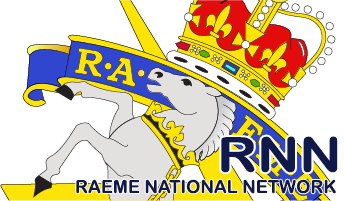Introduction
1. In 1990, with the approval of the Principal Chaplains Committee - Army, Saint Eligius was adopted as the Patron Saint of the Corps of the Royal Australian Electrical and Mechanical Engineers.
2. In adopting Saint Eligius as Patron Saint, the Corps chose a Saint who had the characteristics required of the soldier-craftsman. Saint Eliguis is universally recognised as the protector and supporter of craftsmen, tradesmen, artisans and artificers, and of the old world ‘smith’', ‘farriers’, ‘armourers’, ‘wrights’, ‘saddlers’, ‘coach makers’ and kindred tradesmen. Saint Eligius is recognised as the spiritual guardian and mentor of the officers and men of the Corps of the Royal Australian Electrical and Mechanical Engineers.
Festival Day
4. The Festival Day of Saint Eligius is 1st December each year, and when practicable a suitable church service should be conducted on the nearest Sunday to this date. It should not normally involve any elaborate ceremony. Should this date conflict with religious celebrations held by other Regiments or Corps, the senior RAEME officer should make such alternative arrangements as are appropriate.
5. The RAEME Corps Birthday is traditionally celebrated on or about the 1st of December each year. Combining the festive day of Saint Eligius with the traditional RAEME Corps Birthday parade and sports day is to be encouraged.
Summary - Life History
6. The following is brief summary of the life history of Saint Eligius:
“Saint Eligius was born the son of an artisan, at Chaptelate, near Lomoges in France, about the year 588. Showing remarkable talent for engraving and smithing, he undertook an apprenticeship to become a gold smith.
Upon completion of his training he became known to King Clotaire II in Paris. The King gave Eligius orders to make him a throne, and with the materials furnished he made two instead of one. Clotaire was so impressed he made him Master of the Mint, and coins are still to be found with his name upon them.
King Dagobert I shared his father's trust in Eligius and gave the foundation of a monastery, which in 623 was occupied by monks following the combined orders of Saint Columba and Saint Benedict. He also gave Eligius a house in Paris which he converted into a nunnery under Saint
Aurea.
Saint Eligius was eventually chosen to be Bishop of Noyon and Tournai. He took a leading part in the ecclesiastical life of his day and for the whole of his life he practiced his craft.
Saint Eligius (Known as Saint Elio in France) is well Known on the European Continent and is the patron of all metal workers and farriers.
He died at the age of 71 years, and his remains are in the Cathedral at Noyon. There is a statue of him in the Henry VIII Chapel at Westminster Abbey.”
7. During his lifetime Saint Eligius had achieved mastery of his trade and craft skills, he had won the confidence of kings and queens, he was acclaimed for his high ethical standards within his craft and the community. He was tireless in his contribution to the less fortunate and a recognised motivating force in the development of a strong community, through the fellowship of man. Without exception, the officers and men of the Corps can look proudly to their Saint Eligius, to draw spiritual strength and guidance in all matters relating to their well being.
Biography
8. You can download his biographyin PDF format here
Other sites














